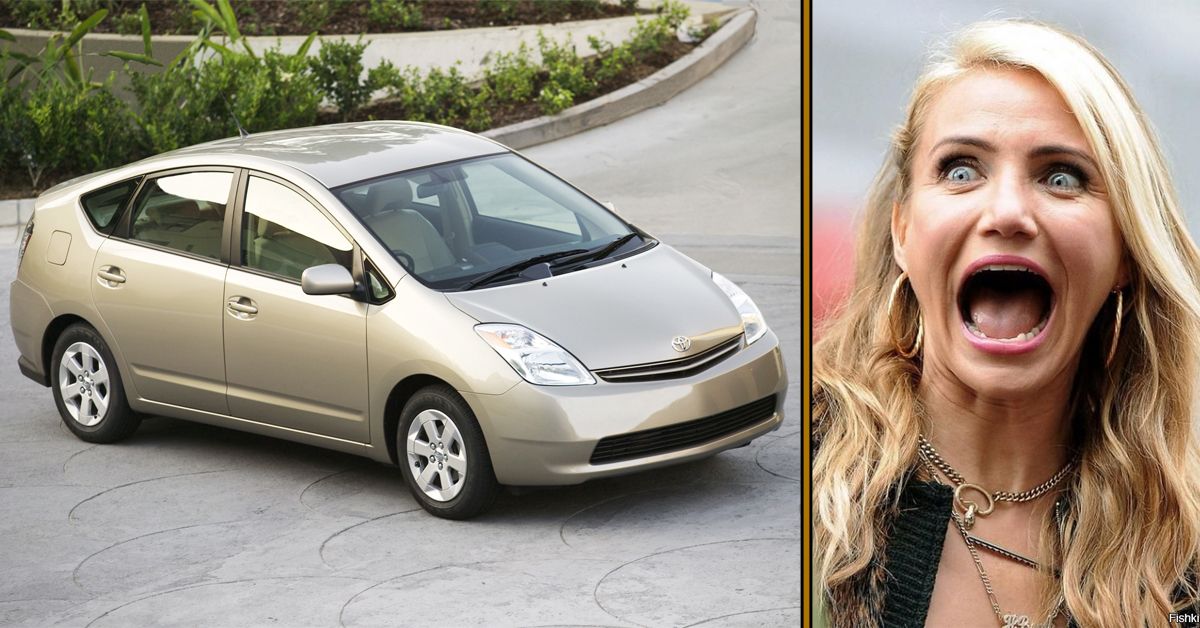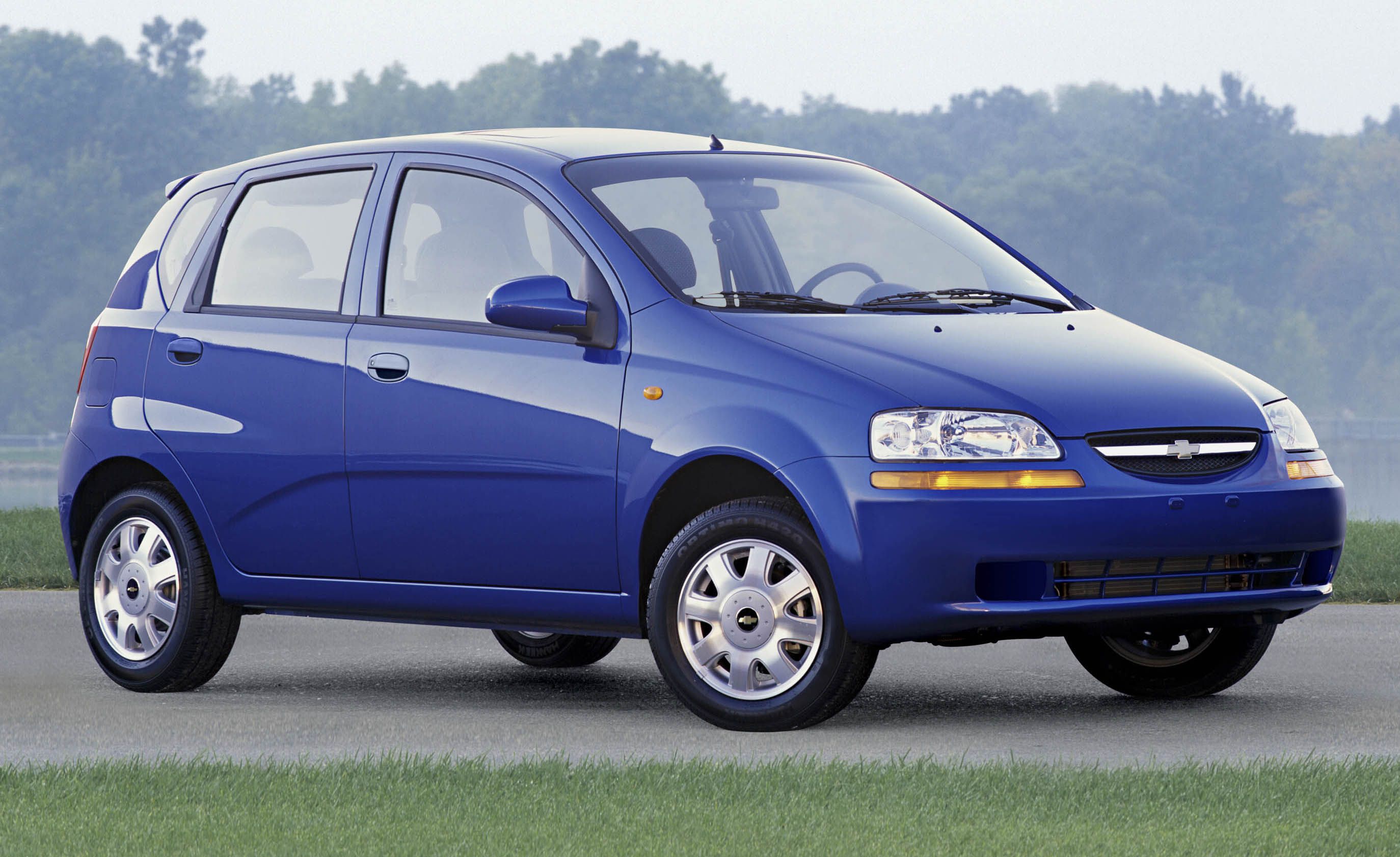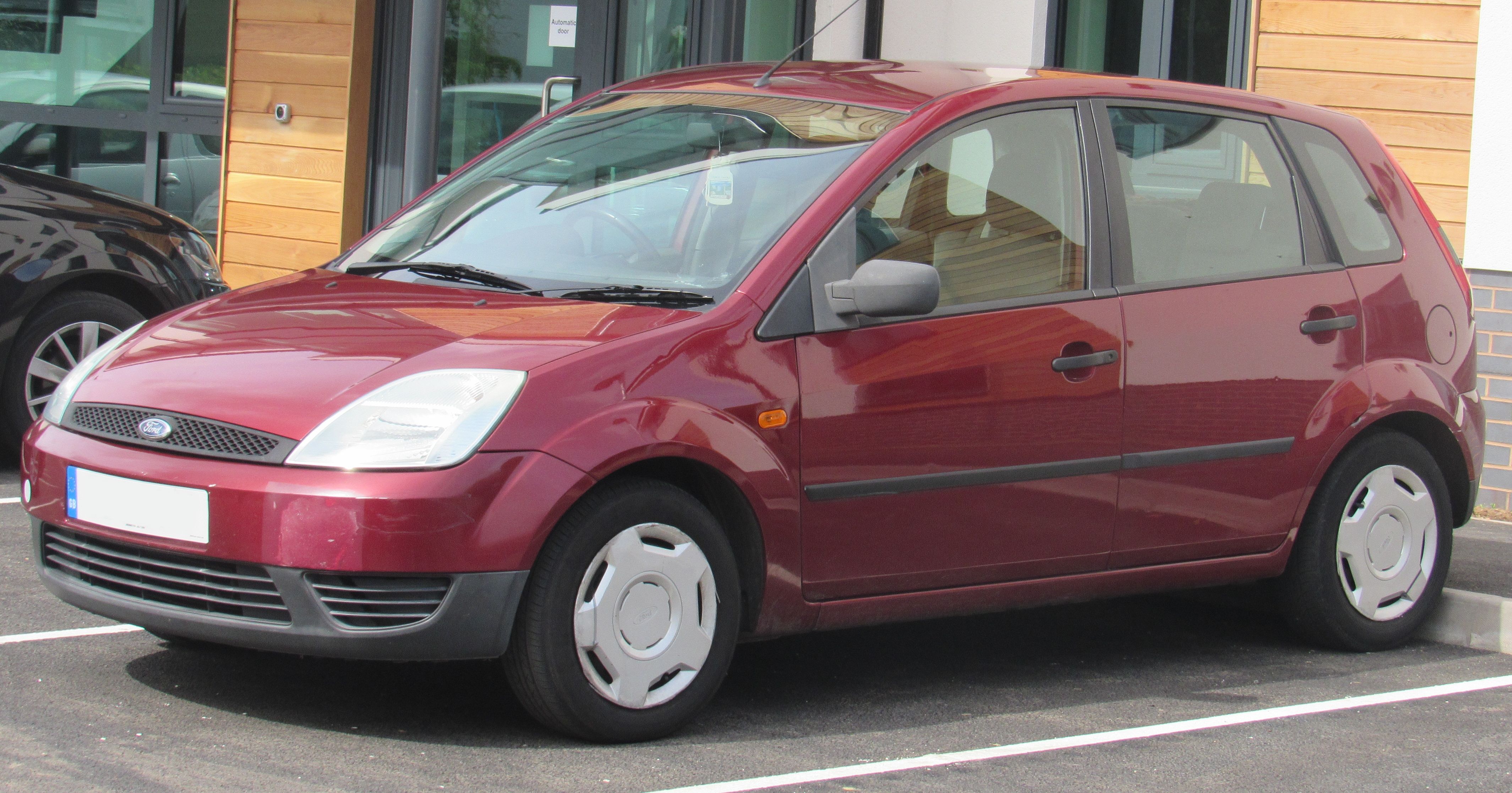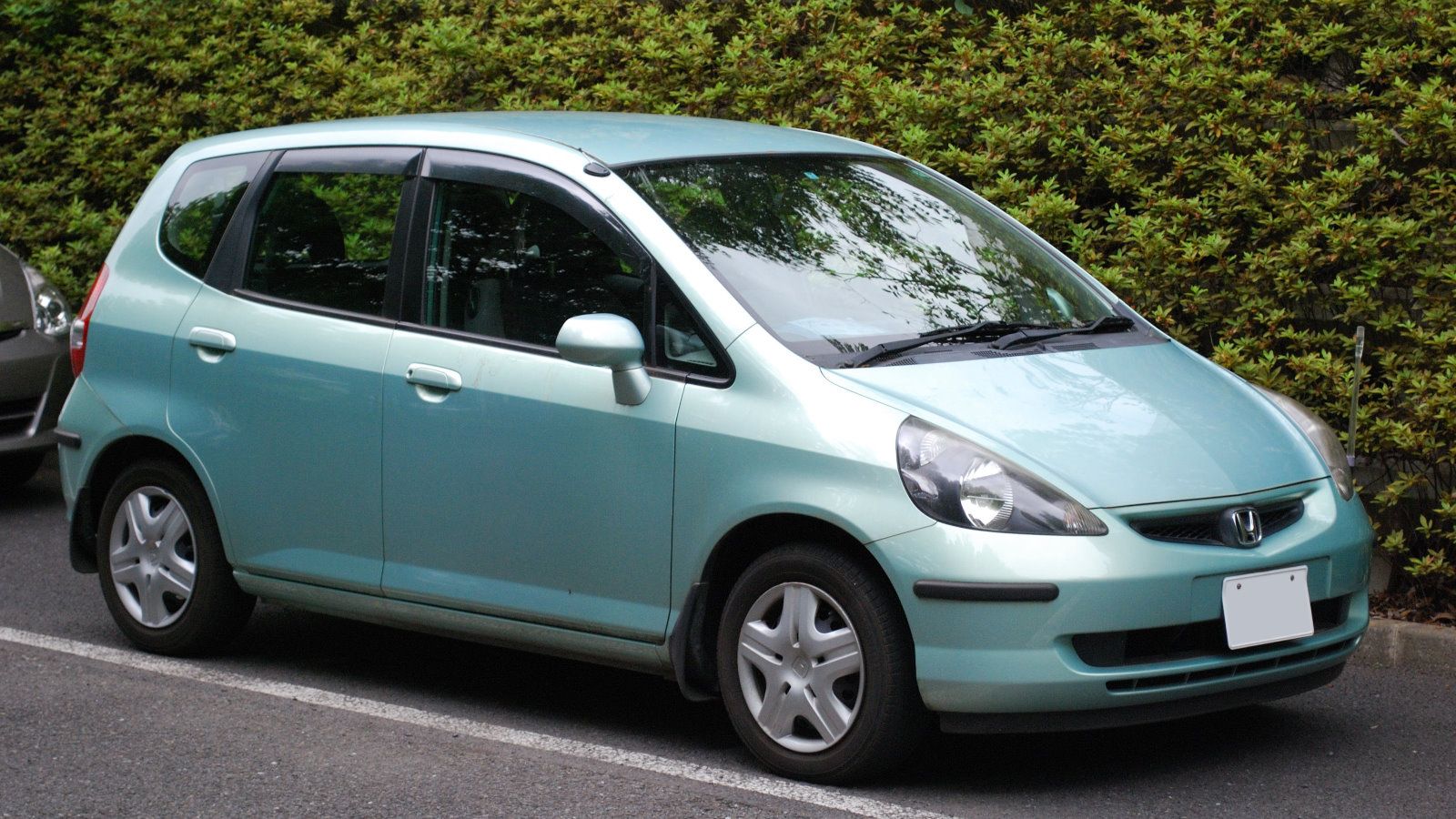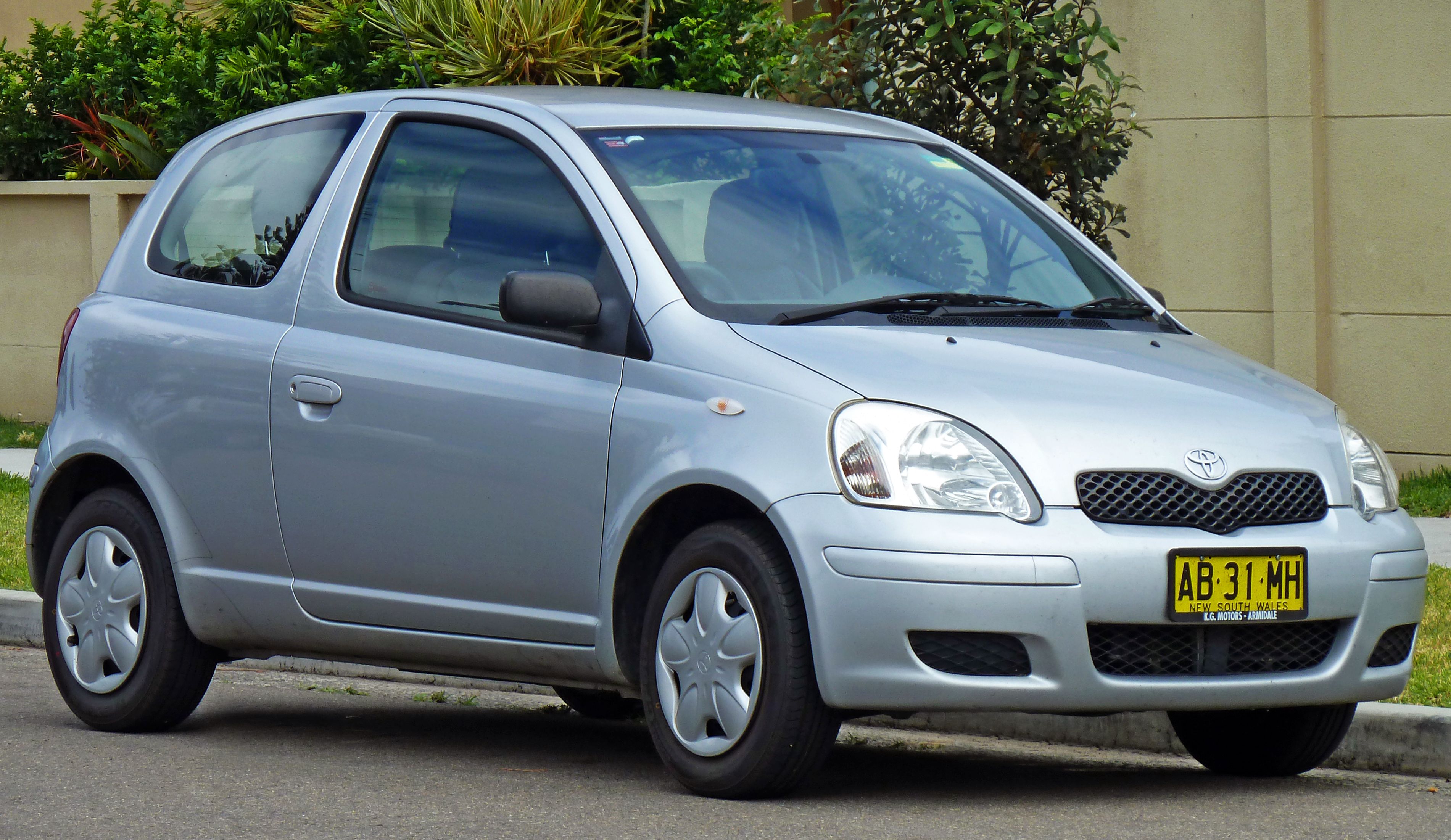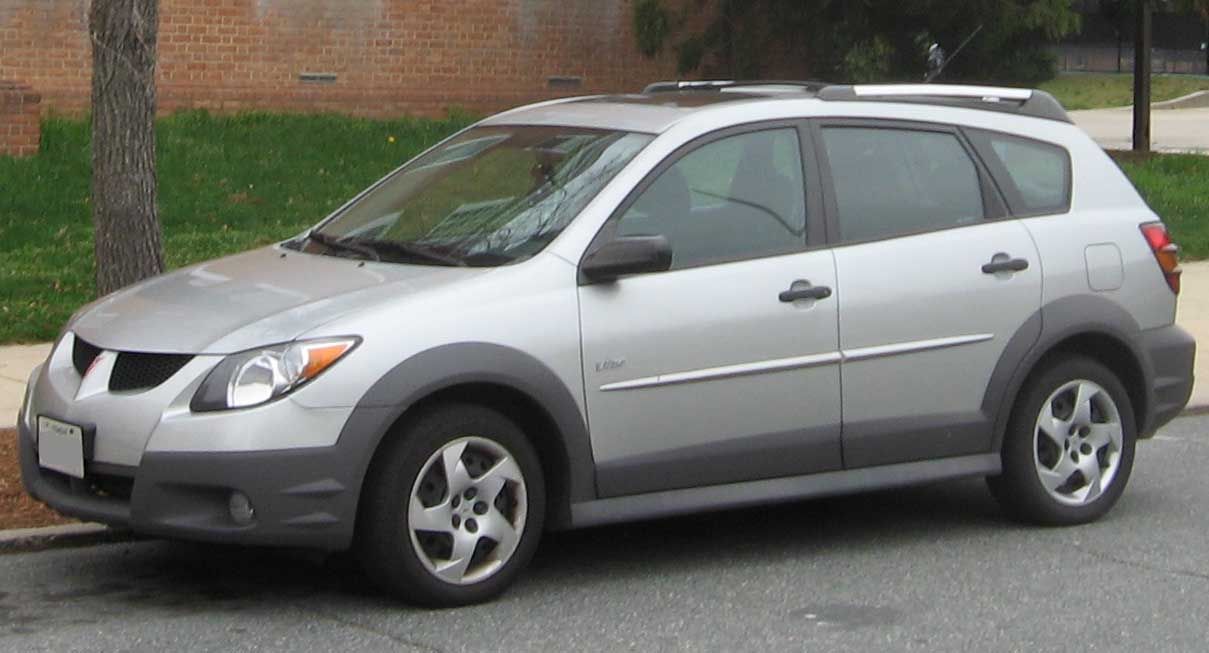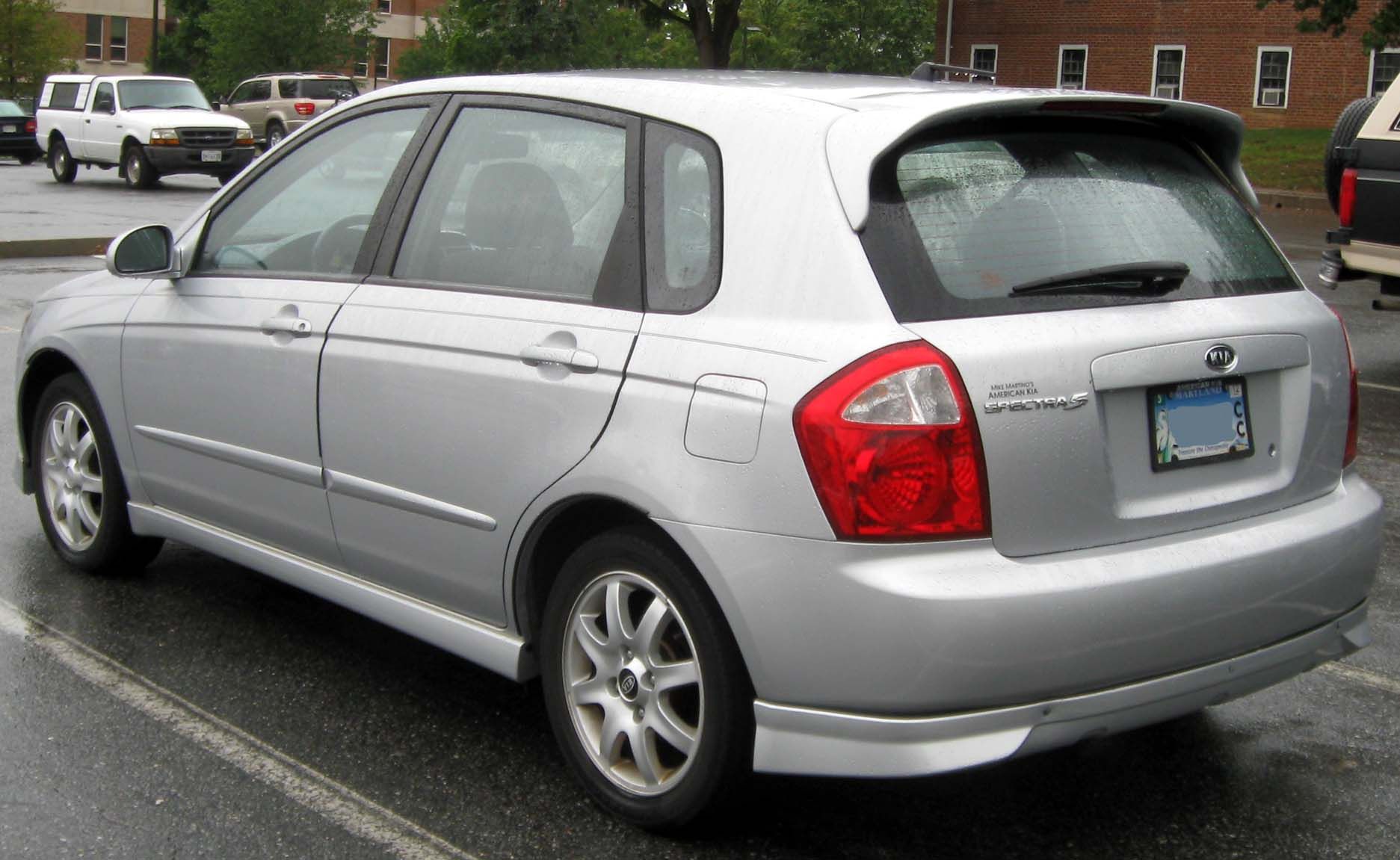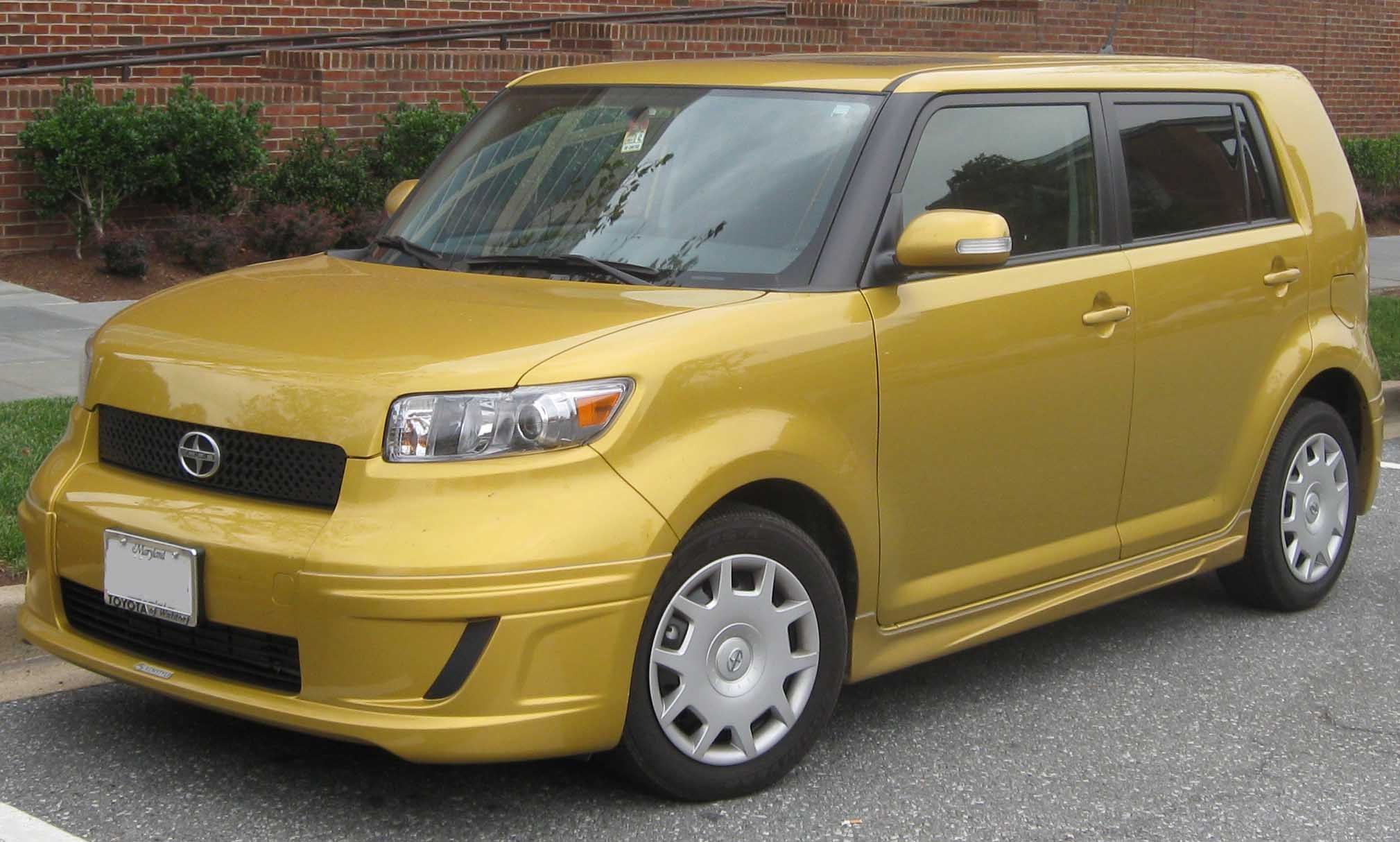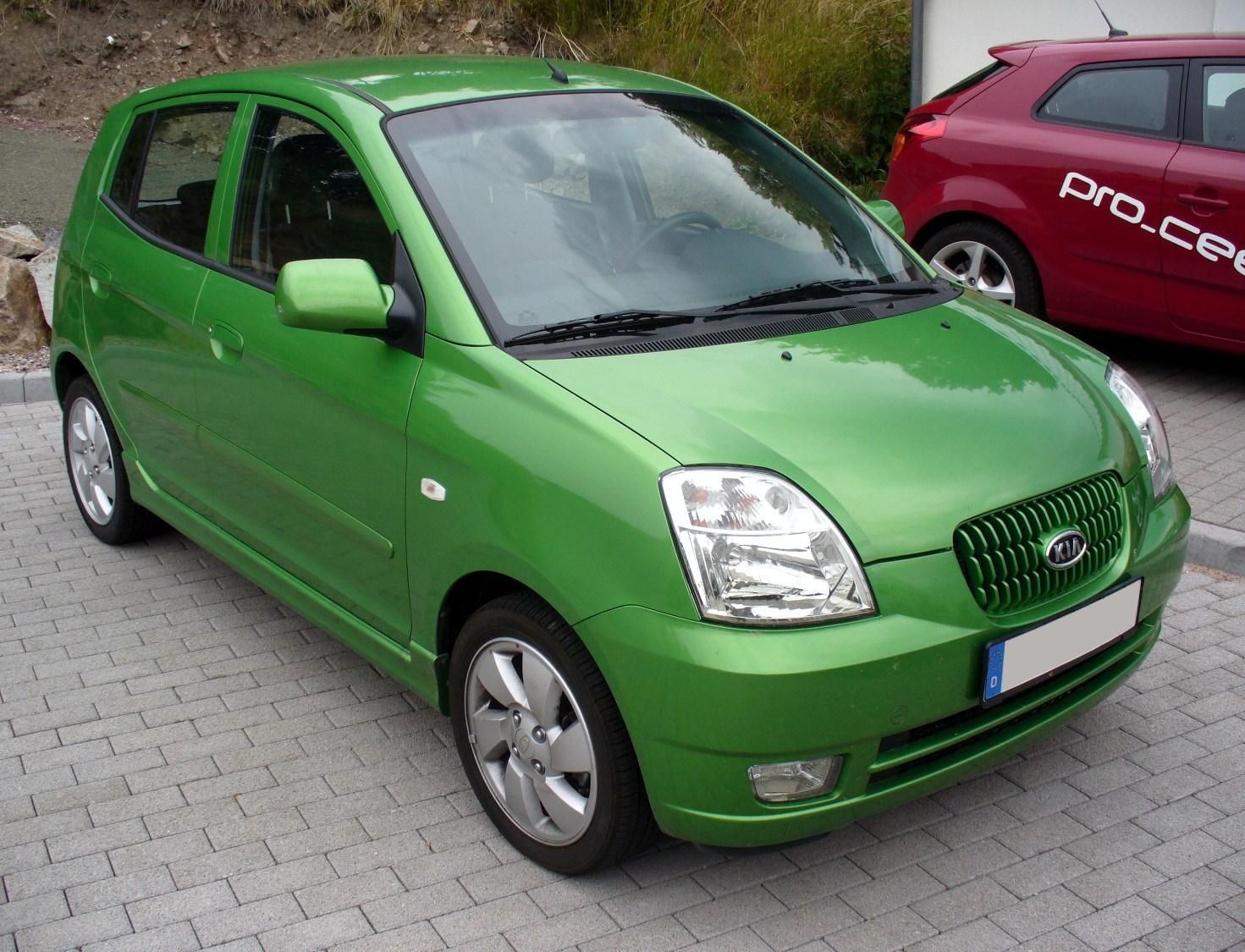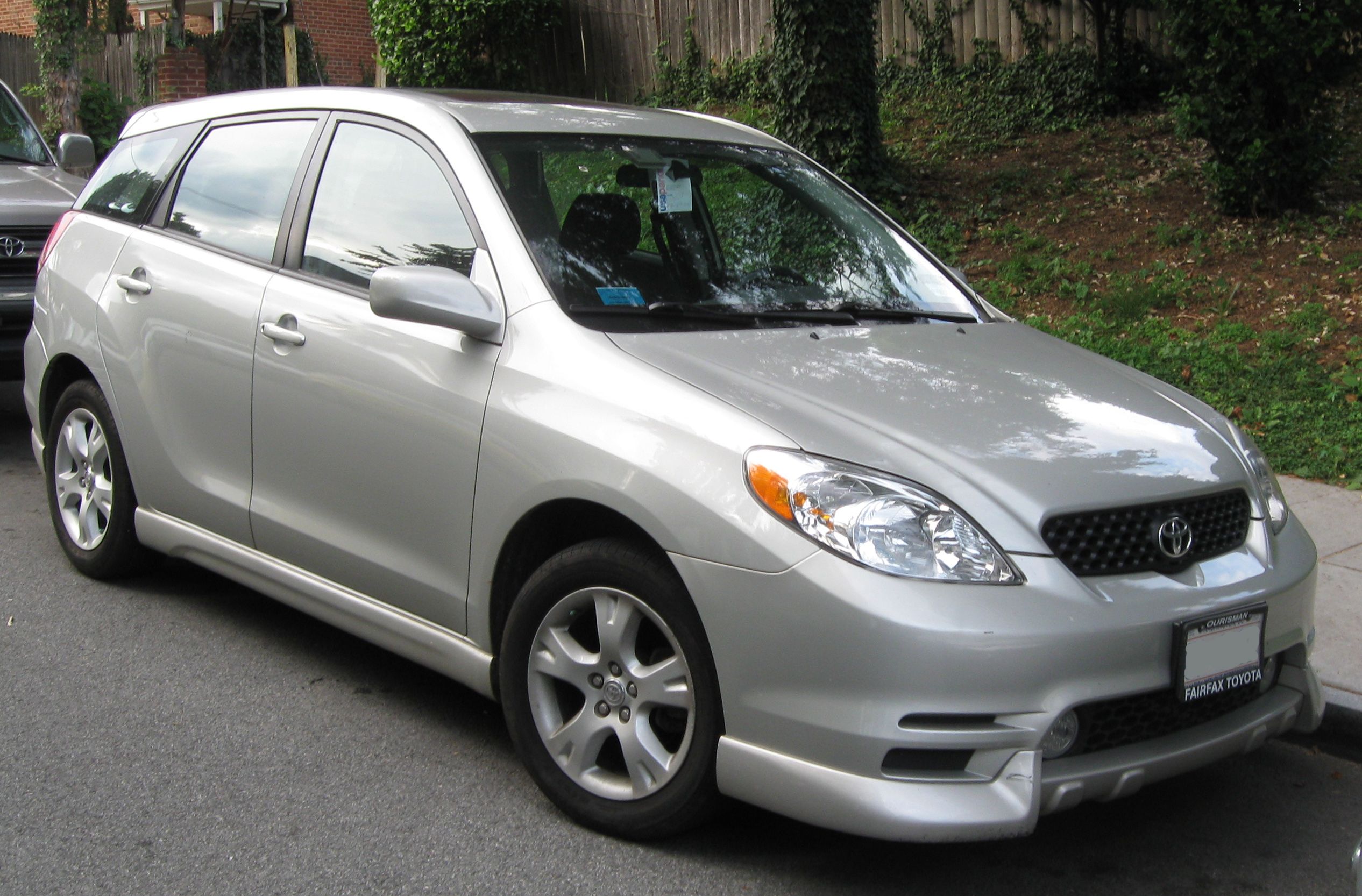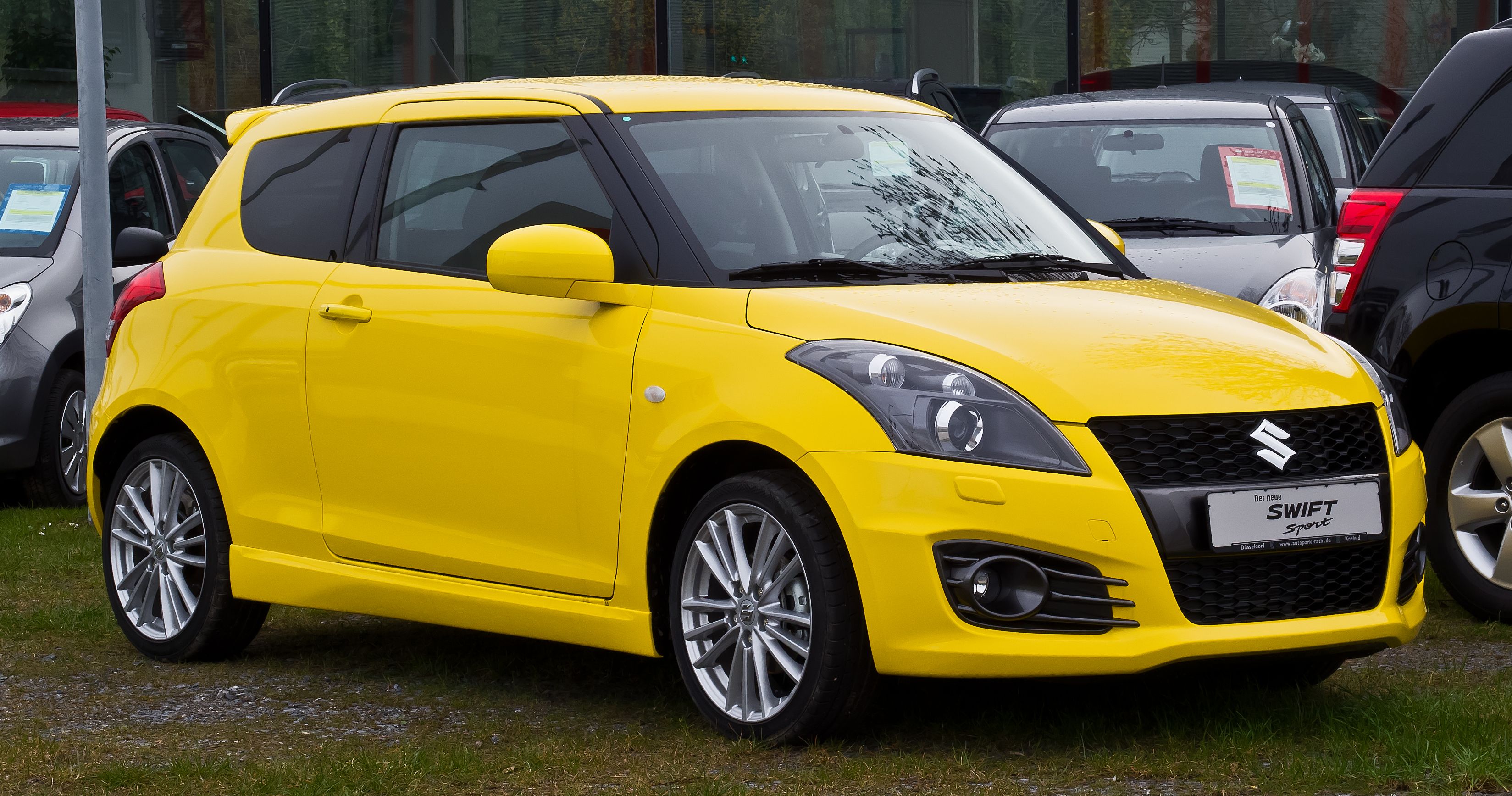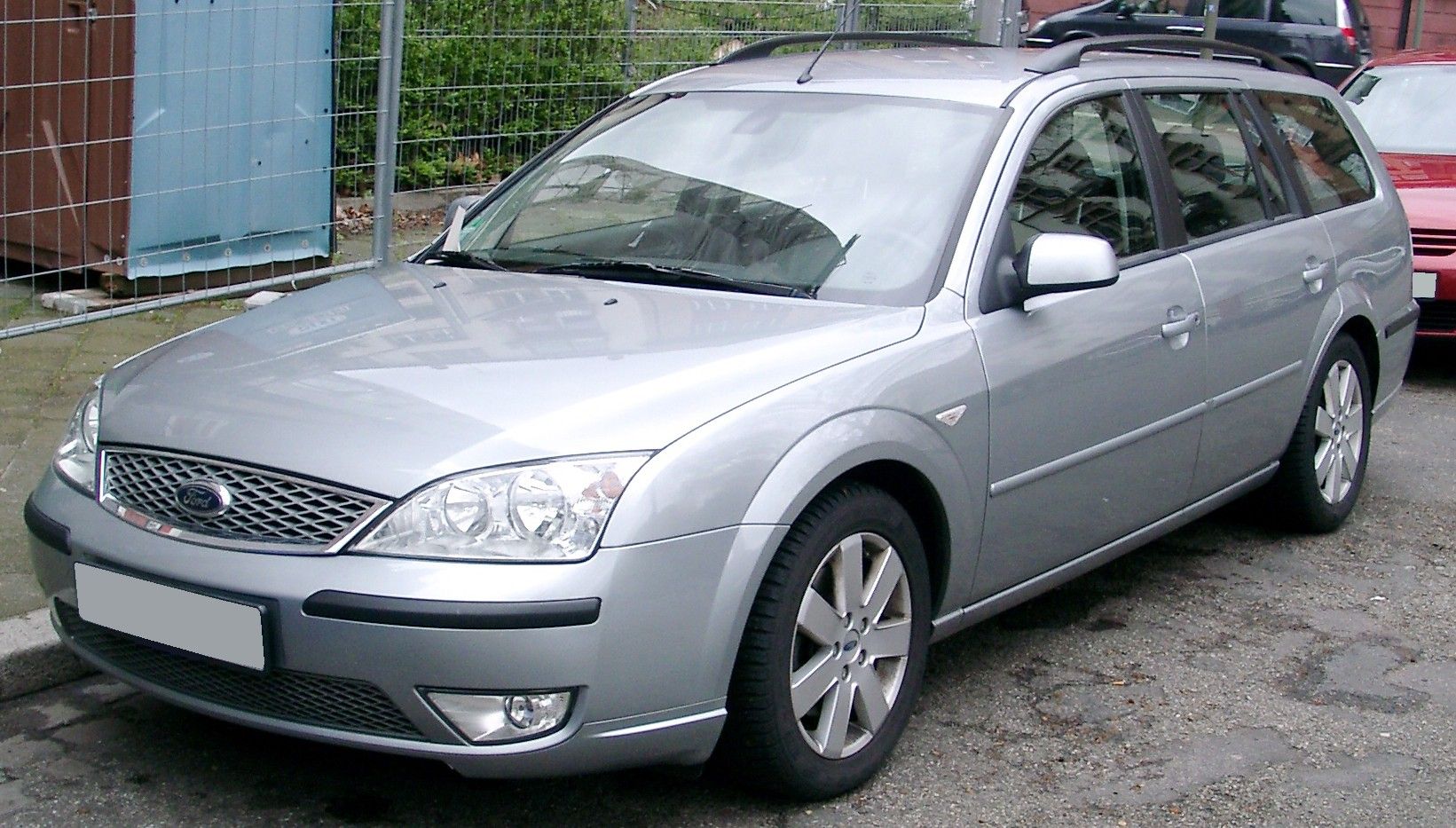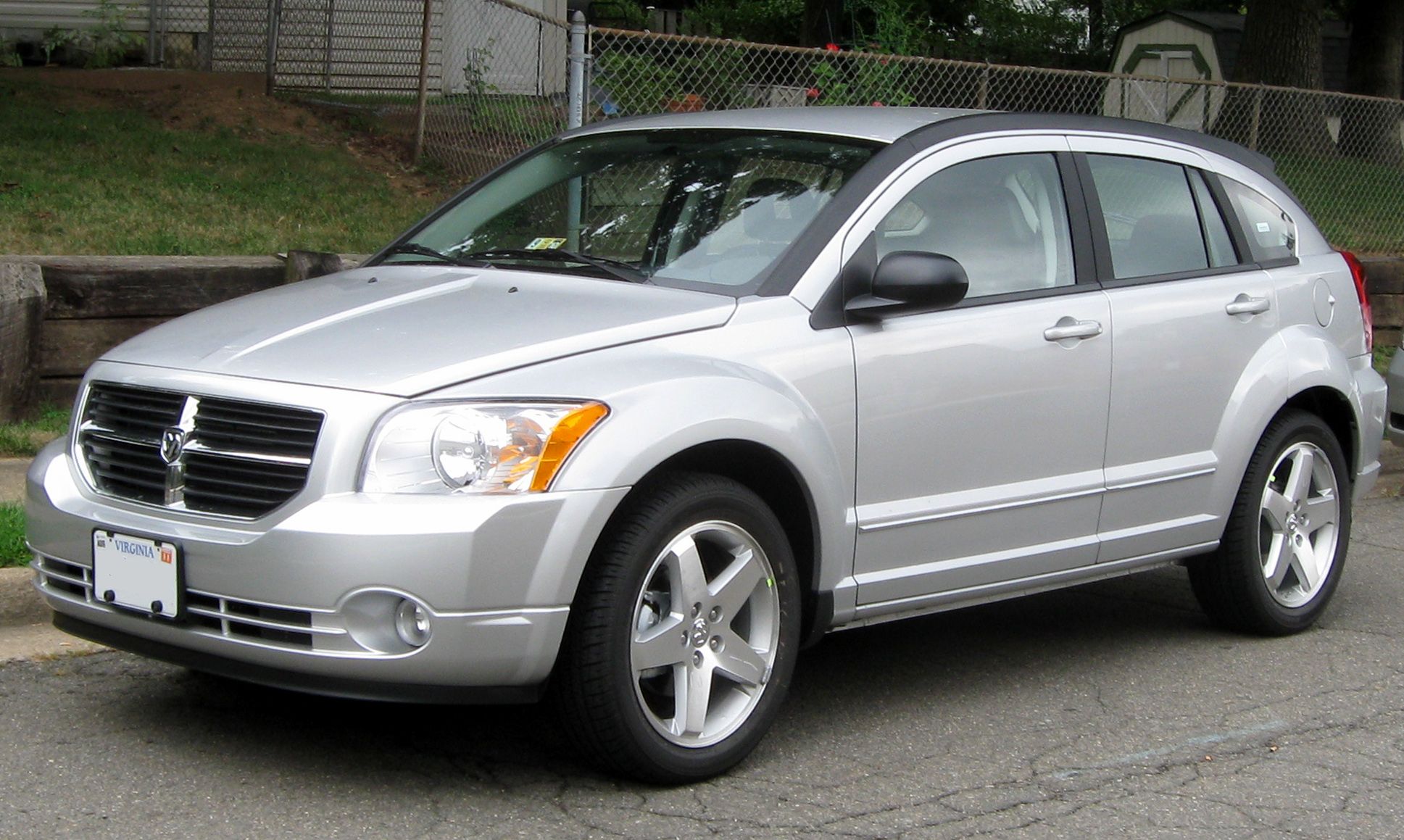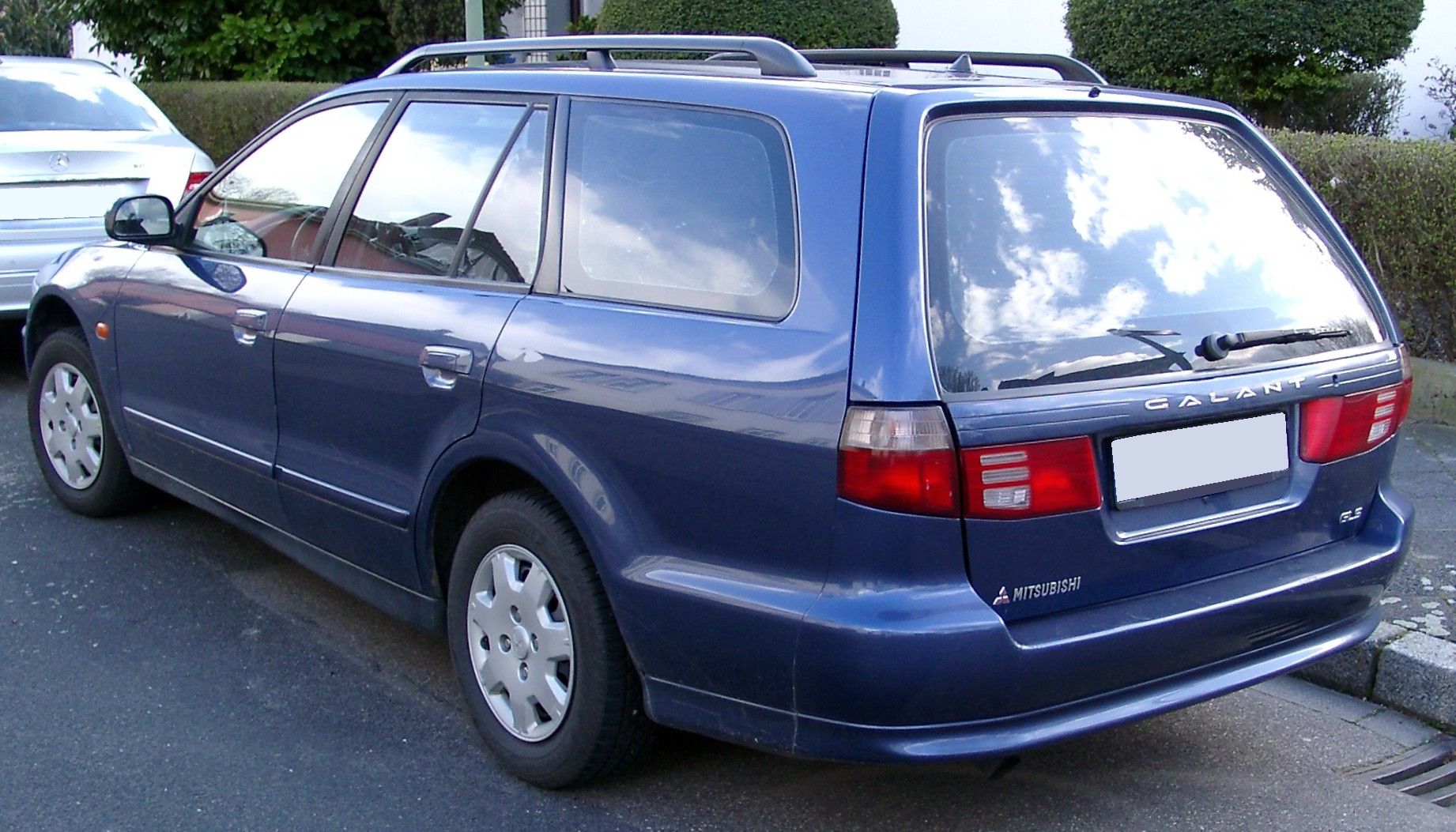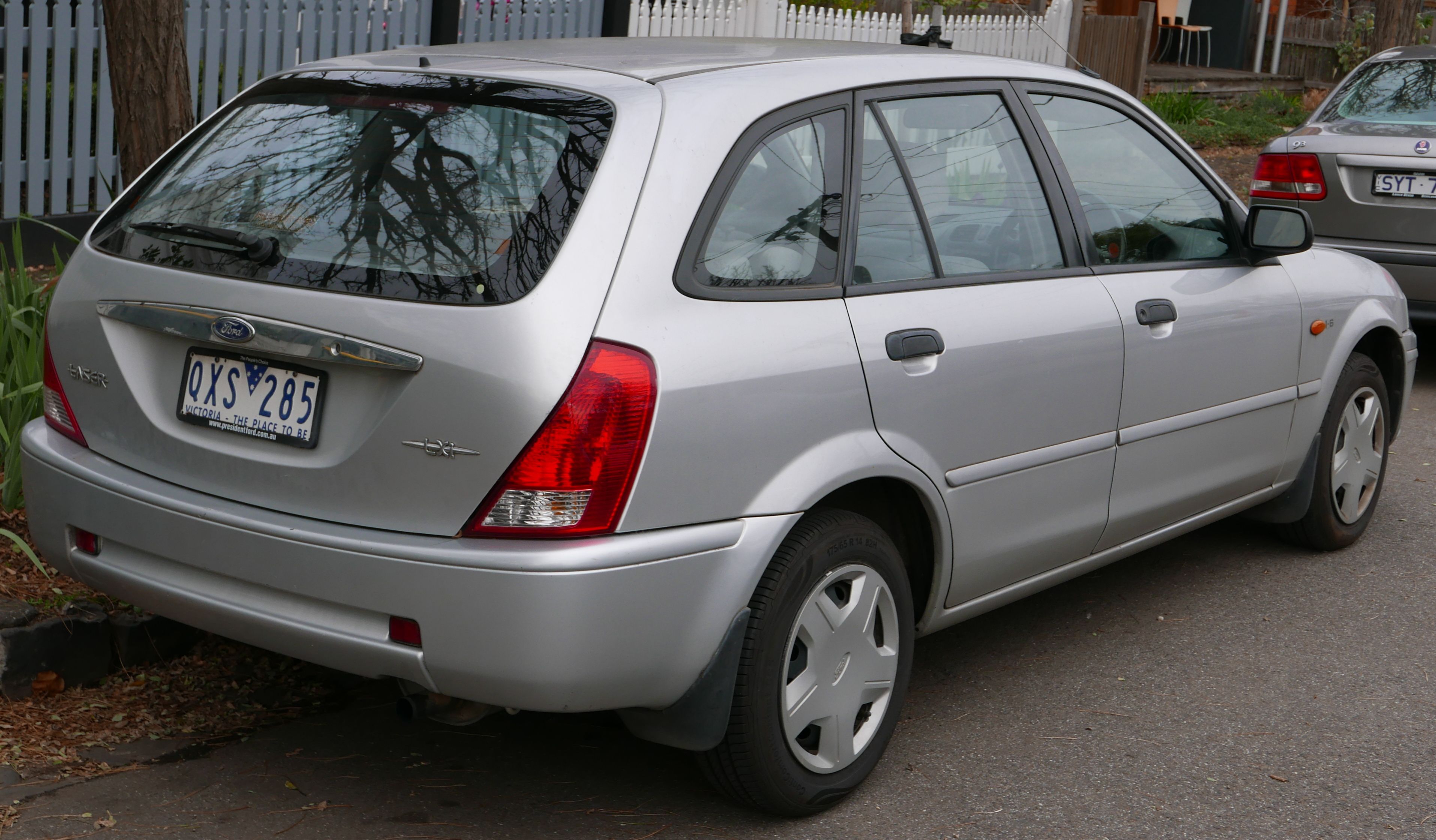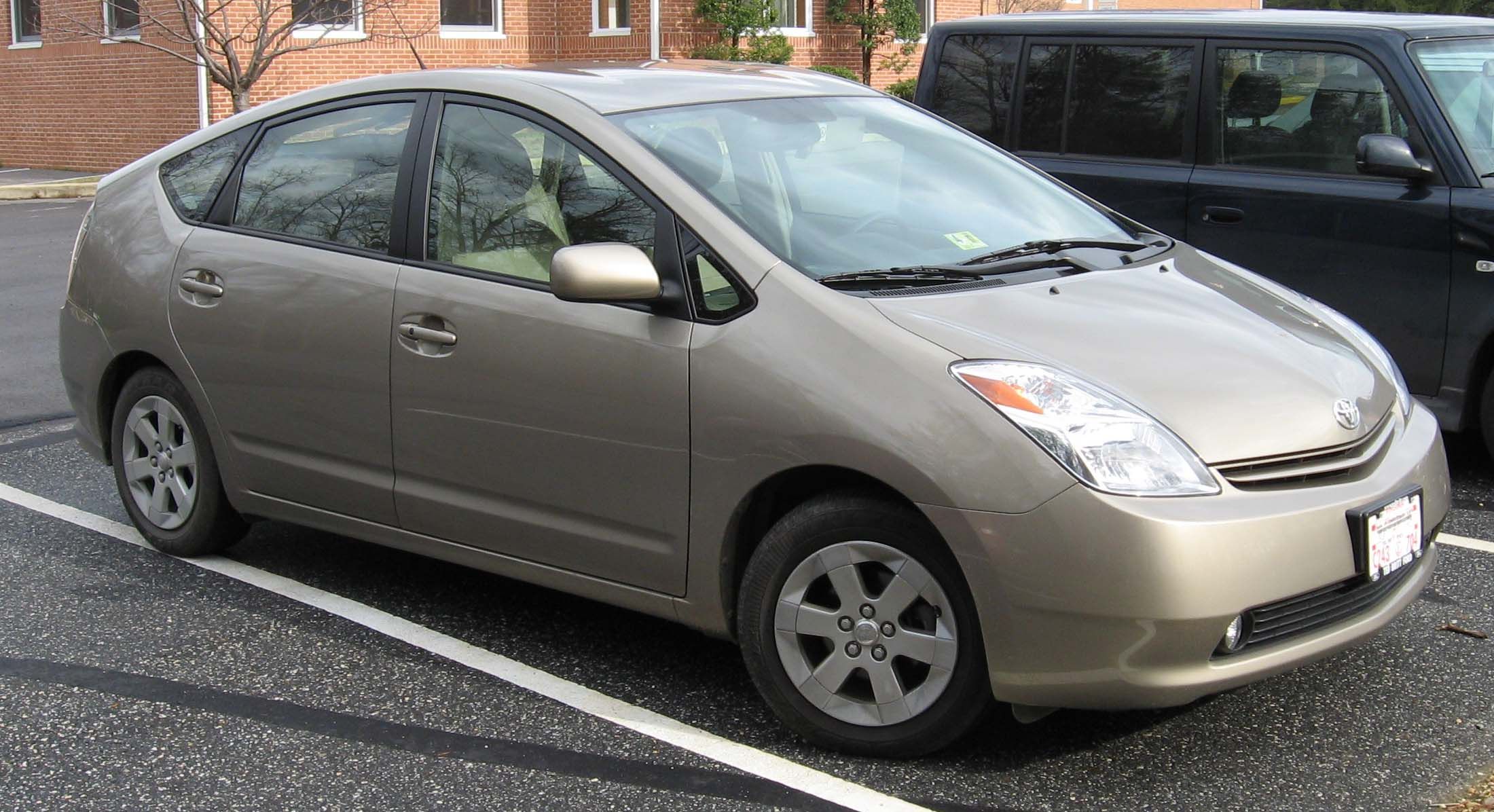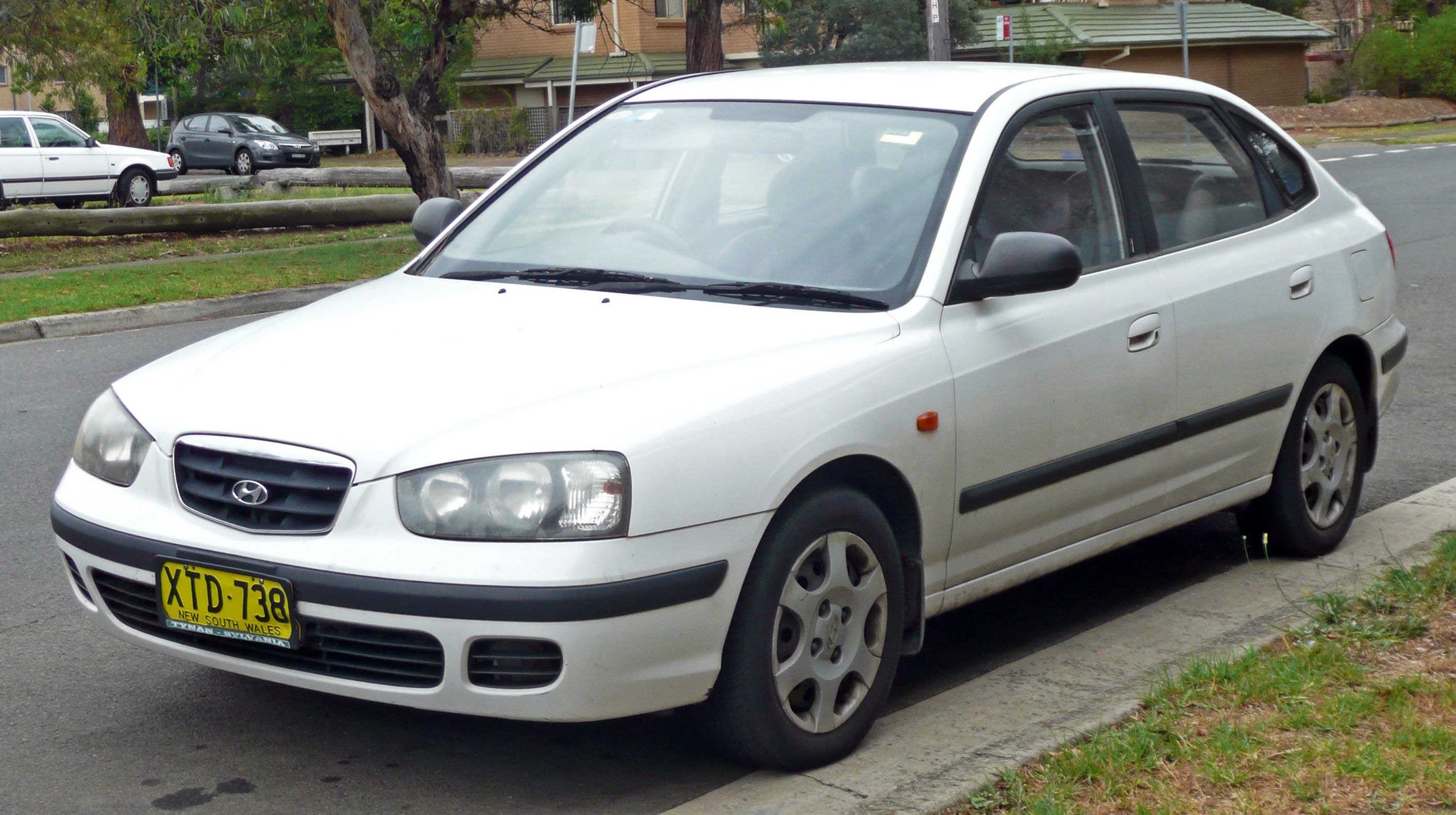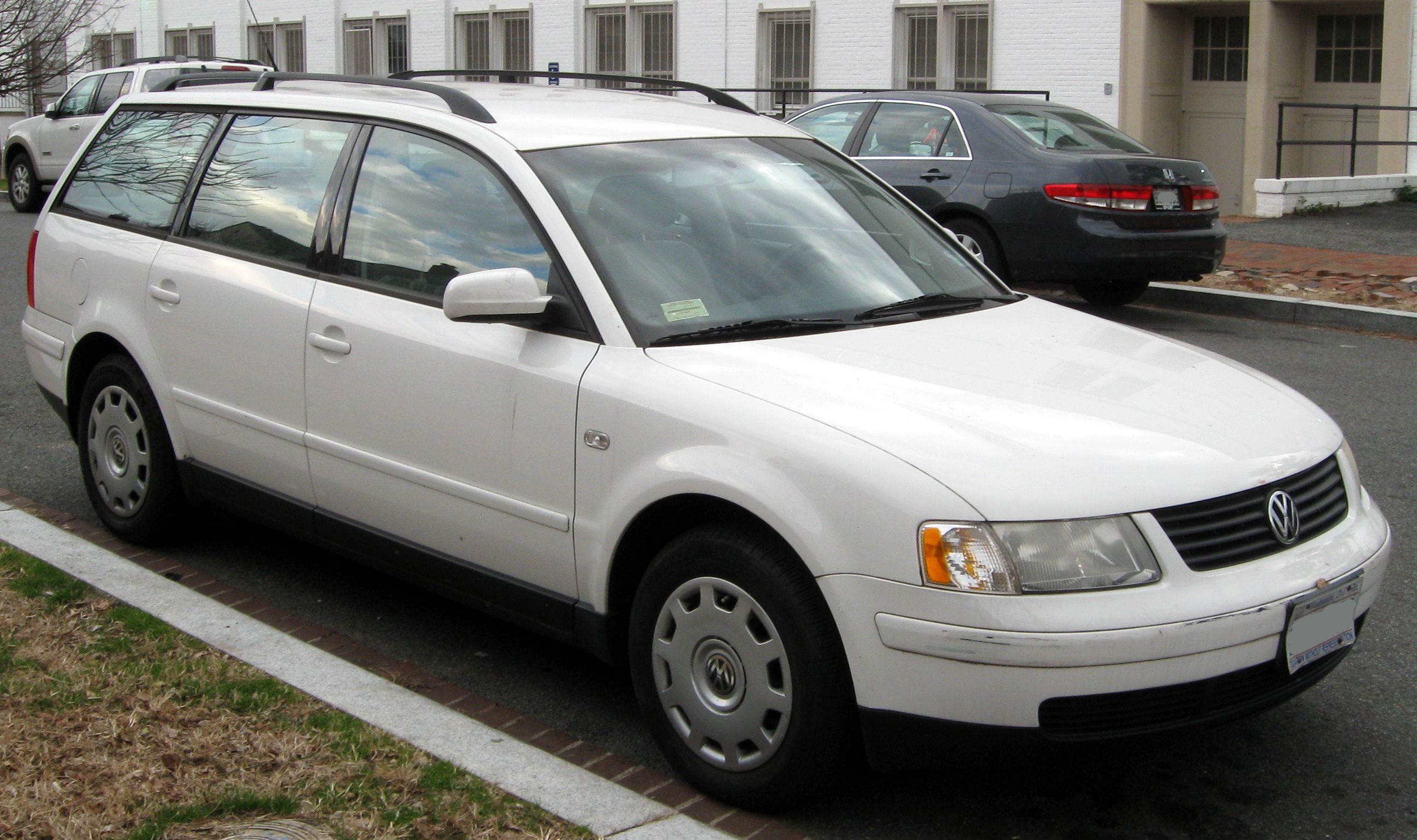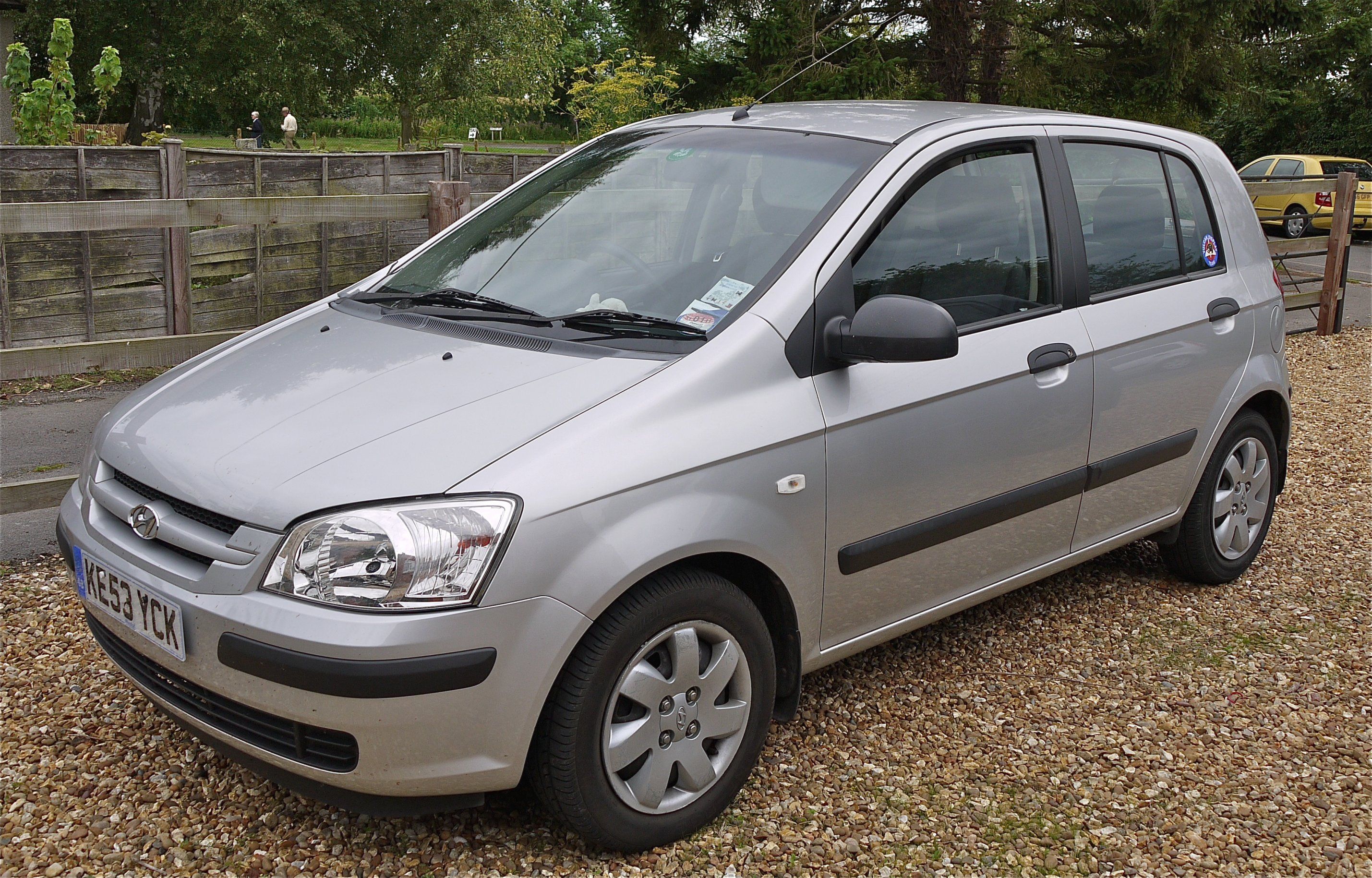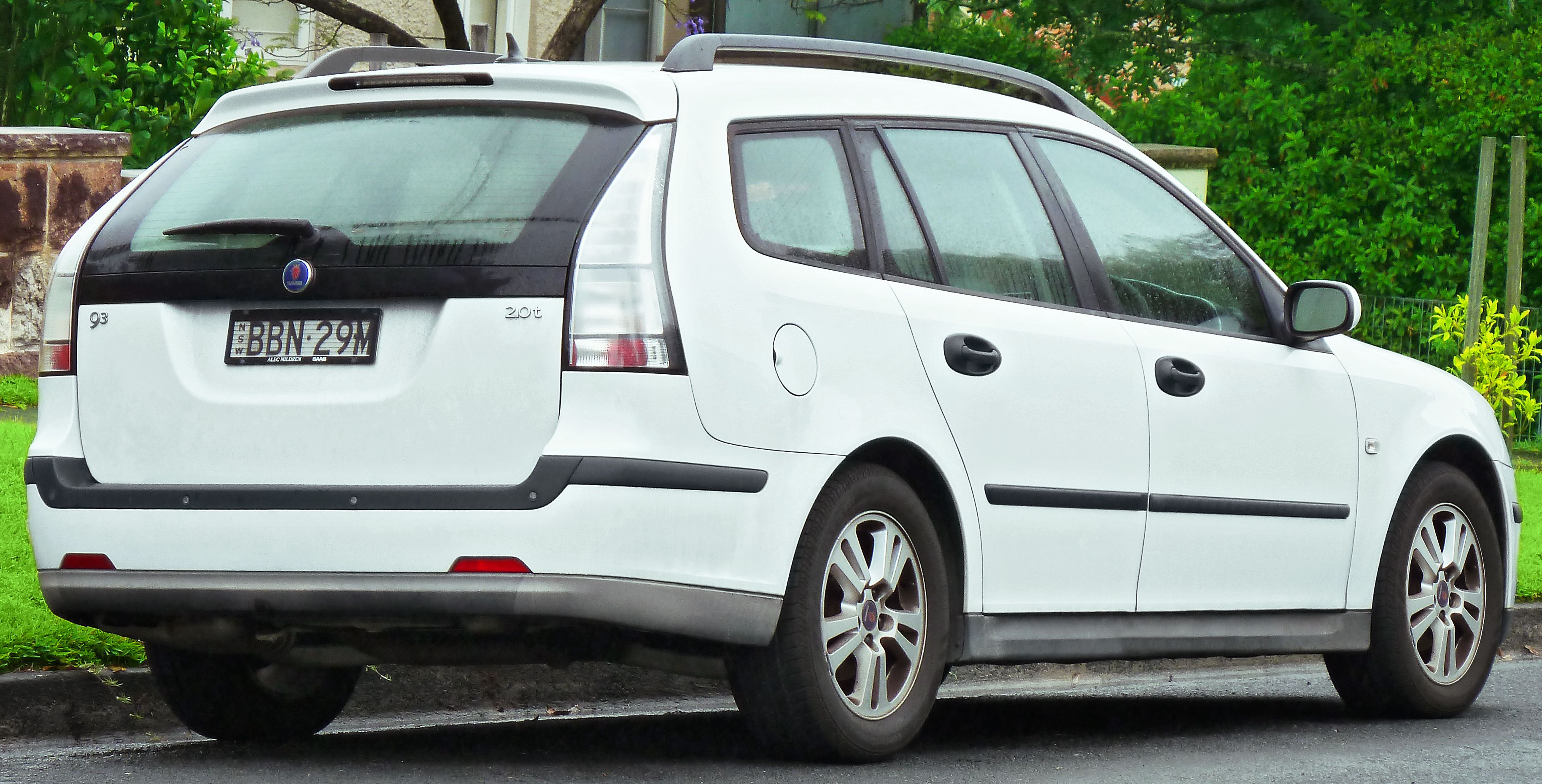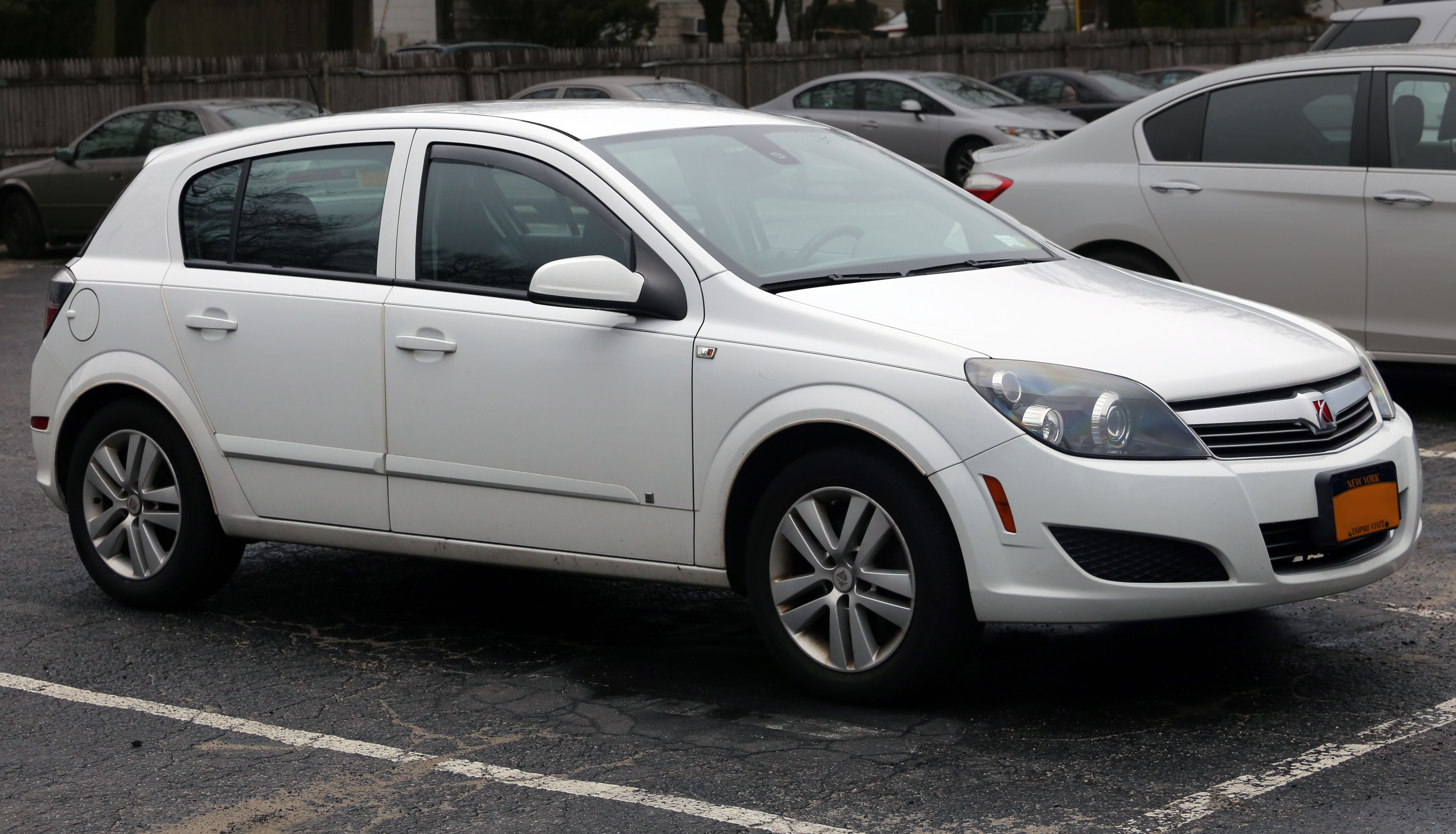The 2000s brought us a lot of great things, most notably, an influx of hatchbacks into automobile markets all around the world. These vehicles, some sporty and others bulky, are meant to offer a more spacious alternative to a sedan, but with less bulk than a crossover or SUV. In fact, many of the cars on this list are just hatch/wagon models of already existing sedans. However, there are a number of hatchbacks that either weren't stellar to begin with, haven't aged well or that have some outstanding trait that make them not worth the time or money. In this list, I will be exploring some hatchbacks from the early to late 2000s that maybe should be skipped over if you're looking to buy a car, especially now, in 2018, because they can no longer be bought new.
One of the main criteria I will be using to judge these cars is their reliability, complaints, common repairs and other judgments on a case by case basis. I want to preface by saying some of these cars aren't traditional hatchbacks, but all of them have either 3 or 5 doors, so I don't think I'm bending the rules too much.
Without further ado, let's begin.
20 Chevrolet Aveo
The Chevrolet Aveo is one of the many cars that was initially manufactured by Daewoo, which has been regarded for quite some time as the worst car manufacturer in history, considering their bankruptcy, serious product defects and a myriad of other complaints. The early models of the Aveo were made and sold primarily under the Daewoo name, but was labeled as Chevrolet over in the States. It should be noted here that the Aveo was not always called the Aveo, and at different points in its production was labeled as the Chevrolet Kalos, Lovia and Nexia, however, they are all essentially the same car.
One problem that commonly affected the Aveo was a speedometer that would just stop working, which is an incredibly irritating issue, to say the least. This can aslo be especially troubling with cops, seeing as how you could be pulled over for unintentionally breaking the speed limit. Moreover, the Chevrolet Aveo just isn't a great investment; there are so many other vehicles in the same class that off more luxury, reliability, and style. For example, a Honda Civic Hatch of a similar year beats the Aveo in nearly every category, including reliability and appearance so maybe, avoid the Aveo if you're looking for a 2000s hatchback.
19 Ford Fiesta
To begin, I should mention that the Ford Fiesta hatch was initially launched in the UK with the 4th generation of the car, but the hatch was eventually brought to America in 2011. The Ford Fiesta isn't a terrible hatchback, considering it has been said to have good handling and provide the driver with a smooth ride.
Just as true is the fact that the Fiesta was lacking in power from its introduction, making for a car that had the potential to be a zippy hatchback, but is instead left in the dust by competitors.
This is why it's on the list: why settle for a Focus when there are so many other, better alternatives? Much like the aforementioned Chevy Aveo, there are better cars in the same class as the Focus, many which are more stylish, luxurious and still in the same price range. Moreover, the Focus has some common complaints about mechanical issues, such as faulty front suspension and excessive oil consumption. These kinds of problems are costly, and can leave you without a car and without money in your wallet. But, like I said, the Fiesta isn't the worst car on this list, however, it still might be a good idea to look elsewhere for a stronger hatchback.
18 Honda Fit
Also known as the Honda Jazz, the Honda Fit is a subcompact hatchback that is praised for its spacious design, something which is an important feature for such a small car. This is definitely a plus. However, at the time of its release, the price of the Fit was higher than other cars in the same class. But what makes the Fit worthy of a spot on this list is the complaints that it has received from the many people who purchased them. Issues seemed to arise with the functionality of the car after 50,000 miles, most notably, the loss of power, sputtering engine and an intermittent check engine light. Obviously, this is concerning for any car, but it is somewhat more concerning for a Honda, as they are usually reliable well past 100,000 miles.
Problems with the Honda Fit's engine is the main reason that it makes this list, although it should also be mentioned that the car isn't winning any awards for appearance either. In many ways, the (first generation) Fit looks a lot like a mini-mini van, an appearance that is done much better by Toyota with the Matrix. But of course, the Fit was introduced a year before the Matrix, so Toyota had the advantage there. To give Honda some credit, I should mention that the design of the Fit has gotten better in the more recent generations.
17 Toyota Yaris
Firstly, I need to clear up some confusion about the naming of this car: in many non-North American markets, the Toyota Yaris is referred to as the Echo, the Vitz, the Platz, the Belta and the Vios, depending on generation and model. The first generation Yaris hatchback is the model I am specifically discussing. Now that that is all cleared up, the Toyota Yaris is a subcompact hatchback that was originally intended to bring younger consumers to the Toyota brand, but that aspect of the car was considered a failure, although, the car still remains in production by Toyota.
The issues with the Yaris aren't as extensive as some of the other cars on this list, however, it's still worthy to note that the Yaris is known to throw a check engine light containing a P0731 code (Transmission fluid temperature sensor) as well as have serious vibration problems due to a possibly faulty engine mount. These problems aren't seriously threatening to the reliability and safety of the car, however, they are still issues that can affect Yaris owners. With these reasons in mind, I'd say that it's probably a good idea to look past the Yaris when considering buying a hatchback. There are simply better hatchbacks out there to spend money on something sub par.
16 Pontiac Vibe
The Pontiac Vibe, which is modeled similarly to the Toyota Matrix, is a compact hatchback that was offered either with an all wheel or front wheel drive train in unison with a 1.8 L, 126 hp engine. In many ways, I view the Vibe as a smaller cousin of the Pontiac Aztek, one of my least favorite cars on the planet, due much to the appearance, but also because of the mechanical issues had by all Pontiac models.
It's unfortunate, but the Vibe is another car by Pontiac that is not safe from serious mechanical problems.
To mention a few, the Pontiac Vibe can suffer from pulsating brakes due to front rotor issues, excessive oil consumption, rough idle accompanied by backfiring caused by valve issues, smoke from exhaust and needing coolant system service earlier than usual. There are more issues with the Vibe, but it's safe to say that based only on the ones I mentioned here, avoiding the Pontiac Vibe might be in the best interest of car buyers everywhere. But honestly, I could even make a blanket statement here and say that avoiding any Pontiac is probably in the best interest of car buyers. Simply put, Pontiacs just aren't very good vehicles, and they certainly have a track record to reinforce that idea.
15 Kia Spectra5
The Kia Spectra5, more commonly referred to as the Spectra or Cerato, is a compact hatchback that boasts a 1.6 L engine, a usual contender for a car of this class. The design of the Spectra5 looks much like that of a Mazda3 hatch, but with sub par parts and a weaker engine, resulting in the lower price that is often a selling point for Kias. So, if money is truly the deciding factor behind buying a car, then the Spectra5 might be for you, however, what you spend upfront might be unbalanced by reliability.
One of the main complaints about the Kia Spectra5 is an alternator issue: in some Spectras, the alternator can fail to give an adequate charge to the battery, resulting in a car that won't be able to start, a serious issue for any driver. I have had my fair share of battery issues (along with other problems) that have left me stranded, asking for a jump in a parking lot, and trust me, it isn't fun. Not only is it embarrassing to ask for help with a dead battery, but it can waste tons of time waiting for someone who willing to provide a jump. This is why the Spectra5 makes the list: cheaper made cars, like Kias, can have serious reliability issues due to the cheap parts they are comprised of. I know, I know, it sounds like I'm just hating on Kia, but this is a truth with any product. How much you spend up front, will, many times, determine how much time, energy and money the product requires throughout its lifetime.
14 Scion xB
The milkman called, he wants his truck back. Or wait, no, I want to make a toaster joke instead. Ah well, too late...The Scion xB is one of those cars that followed the cube style hatchback trend of the 2000s, something which I obviously never understood the appeal of. Aside from appearances, the xB carries the mechanical capacity that one would expect from a subcompact hatchback: a 1.5 L engine, outputting a little over 100 hp. But, of all the criticisms that can be made about the xB, it is made by Toyota (owner of Scion), so how bad can that be? At least, that's what I thought.
The most concerning complaint about the Scion xB is head gasket failure caused by manufacturing defects in the cylinder block.
Head gasket failure is a serious issue: it can damage your engine and will leave you without a working car as well as a serious repair cost. Now, I'm not saying that every Scion xB will inevitably have a failing head gasket, but it's important to understand that its simply been reported more than in other cars, meaning it's a more common issue in xBs than in other models. But honestly, aside from mechanical issues, who wants to drive a cube? Not me, that's who.
13 Kia Picanto
The Kia Picanto, the second vehicle on this list that is only available outside of the US, is a classified as a city car, much like the Smart ForTwo, but of course, is not electric. The Picanto's 1.0 L engine outputs 65 hp, which is normal for this classification of vehicle. The reason that the Picanto is on this list however, is for many of the same reason that the Kia Spectra is: mechanical issues caused by sub par parts.
The Picanto suffers from issues that drastically affect its reliability, such as, failing components in the crankshaft. Specifically, the crankshaft has been known to snap, just behind the crank timing gear, an issue which can causes idling and starting problems. Additionally, the Picanto can face fuel regulator problems, which results in the car not being able to start because there isn't enough fuel getting sent to the injectors. All of these issues aren't simple fixes either, and will usually require taking the car to a mechanic, which of course, is not cheap. This is another example of Kia skimping out on quality parts so they can lower the price tag of the vehicle as a whole, something which looks good up front, but causes stress and heartache later on in the cars life.
12 Toyota Matrix
The Toyota Matrix, which is based on the design of the Toyota Corolla, is a compact hatchback that was meant to offer a sporty alternative for consumers who wanted something more spacious than Toyotas other models. Much like other hatchbacks, the Matrix was marketed specifically toward more youthful consumers, especially the XR and XRS models which offered sports style facelift and could be upgraded with an AWD drive train. Boasting a 1.8 L engine that could output over 120 hp, the Toyota Matrix is an alright car, but there are some downsides.
The Matrix is prone to a few different check engine light issues, the most common being failure of the oxygen sensor and malfunction of the EVAP system.
Issues for the Matrix unfortunately do not stop there, as other mechanical problems can include increased oil consumption and engine block issues. These problems have been reported to cause engine rattling as well as rough idling and shifting. Lastly, the Matrix has received complaints about defective bolts in the window housing, and while an improperly working window isn't the biggest problem a car can face, it's rather annoying when even the little things in a car don't work. So, while Toyota's history of reliability may give the Matrix some credibility, there are a myriad of issues that should be considered before buying.
11 Suzuki Swift
The Suzuki Swift, which was introduced as a replacement for the Suzuki Cultus, is classified as a supermini automobile and is equipped with either a 1.3 L engine or a 1.5 L engine, outputting a little over 90 horsepower. Needless to say, the Swift isn't winning any awards in the speed department, but of course it is a rather small car. However, the lack of serious horsepower is not the reason that the Suzuki Swift is on this list, but more so because of the commonly reported problems with the car. Among other problems, two that stick out as major issues are a vacuum leak in the throttle body and the chance of warped rotors.
An engine vacuum leak in the throttle body has been known to cause problems such as stumbling acceleration and a rough idle, while warped rotors can cause a pulsating break pedal as well as other brake related issues. Needless to say, having any sort of problems that affect the handling (vacuum leak) and the safety (warped rotors) of a car can be catastrophic for the owner, securing the Suzuki Swift as a car you might want to avoid buying, especially as a used vehicle.
10 Ford Mondeo
The Ford Mondeo, also known as the Ford Contour, faced the end of its production in 2000, but it's still right on the edge, and I felt it should be included in this list. The mid-size car is equipped with either a 2.0 L 4 cylinder or 2.5 L 6 cylinder, giving the Mondeo much more power than some of the other cars on this list, but of course, it's quite a bit bigger and heavier. The reason the Mondeo is on this list is because of the serious problems it faces, much like other cars Fords have released.
One glaring issue that the Mondeo and Coutour face is a failing transmission, due to a front pump issue, a mechanical problem that can be seriously costly and damaging to other vital systems in the car. Additionally, the Ford Mondeo can face power steering problems, check engine lights and other minor issues. All of these issues come together to make a car that isn't wonderful, thus its placement on the list. But even looking past these complaints, the car just looks underwhelming, as is the fate with many of Fords cars that were released in the 2000s.
9 Dodge Caliber
The Caliber is classified as a small car (although it reminds me more of a station wagon than a small hatchback), whose base model is equipped with a 1.8 L engine, outputting 148 horsepower. There were other, more powerful versions of the Caliber, but the entire line was discontinued in 2011. In my opinion, the Caliber is one of the worst cars that Dodge has ever made and while that might be because I hate the way it looks, there are more serious reasons to avoid buying this car.
Just to give an idea of all of the complaints about the Caliber, there are seventeen listed complaints on RepairPal.com, too many for me to list in this article.
To start off, the Caliber faces starting issues caused by a faulty anti-theft system. Yes, you read that correctly, the anti-theft system that is built into the Caliber can prevent the car from starting. As if that wasn't ridiculous enough, the front struts will most likely need to be replaced earlier than they should, causing poor handling and a seriously rough ride. There are a multitude of other smaller issues, but considering the sheer amount of complaints about this car, it probably should be avoided. Honestly though, the Caliber's station wagon appearance should be enough to warrant looking elsewhere anyway.
8 Mitsubishi Galant
The Mitsubishi Galant wagon is a mid-size hatch that was produced from 1996 until 2006 and boasted a series of different trims, ranging in engine sizes, from 1.8 L to 3.0 L. The Galant wagon, which was released as part of the car's eighth generation, added to a long legacy of Galants, which date back to 1969 and cumulatively sold over 5 million units. However, this doesn't mean the Galant is a good car, which of course, is why it's on this list.
The Galant has a myriad of mechanical problems that can affect many systems in the car, including issues that will prevent the car from starting, cause oil leaks and be incredibly costly in terms of repairs. In the Galant, the most concerning issues include a faulty crankshaft sensor, failed idle control valve, bad cover gaskets and engine vacuum leaks. These problems seriously affect the reliability of the car, which is something no owner wants from their vehicle. Furthermore, there are more issues that affect other, non-mechanical aspects of the car, such as the power windows failing. Its because of the concerning amount of issues that the Mitsubishi Galant has that buying this car may not be in the best interest of any consumer.
7 Ford Laser
The Ford Laser is almost completely identical to the Mazda 323, equipped with an engine size ranging from 1.6 L to 2.0 L, slightly under the expected amount for a hatchback of its size. The Laser was produced for almost 20 years, and while it was popular at first, the reception of the car from the general public eventually tailed off by the release of the fifth generation in 1998.
As one last attempt to regain the popularity the Laser once had, Ford re-released the car in 2002 with a series of minor upgrades, however, these attempts were not successful.
The Ford Laser in on this list because it has many of the same mechanical problems as other Fords. Simply put, it isn't an amazing car, which was partly the reason for the decline in its popularity. However, this is also due to the unappealing design of the car, which has a design that screams "lame." Maybe I'm too harsh on these station wagon type design hatchbacks...Nevertheless, I know I can say that I wouldn't want to be caught dead driving a Ford Laser, it's just all around an unappealing car that didn't really need to be released in the first place. So, if you're looking to buy a wagon, maybe avoid the Ford Laser.
6 Toyota Prius
Okay, I don't hate the environment, but even though driving a eco-friendly car is a noble cause, I seem to have a gripe with the Toyota Prius. The car comes standard with a 1.5 L hybrid engine and a lift back design that allowed for a surprisingly large amount of space. But there are many reasons to avoid this car.
The reason that the Toyota Prius is on this list is because of the image it presents of the driver: a trend seeking car buyer who really doesn't know how driving a Prius is helping the environment. The eco-friendly car buyer trend started with the release of the Prius, and unfortunately, many people traded in their cars to afford a new Prius, something that inherently drives production of the car, which is arguably worse for the environment than driving a less eco-friendly car. Ironic, isn't it? I will admit, I'm making a huge generalization, but you can't say I'm wrong either. And on top of everything, the Prius is just ugly. It's an unattractive car that started a trend of eco-friendly cars being designed with the same distasteful aspects (looking at you Nissan Leaf) and I'd say that's another reason to dislike and avoid the Prius.
5 Hyundai Elantra
The Hyundai Elantra hatch was introduced with the third generation of the car, toting an interesting fastback design and a 1.6 L engine outputting a little over 130 horsepower. As an attempt to improve the perception of Hyundais to American buyers, the Elantra included features that most "value" cars had, like power windows, more airbags and air conditioning. This attempt extended with different models of the Elantra, most notably the GT and GLS models, which had features like MP3 and CD decks (irrelevant now, but a huge deal at the time).
So why should you avoid buying an Elantra hatch? Well, there is a multitude of mechanical problems that plague the Elantra, some of which can be costly and will leave you stranded.
The crankshaft angle sensor in the Elantra is faulty, in fact, Hyundai even issued a recall on this part, because it can cause the engine to stall or not start entirely. What is more concerning is that this wasn't the only recall: some of the airbag electronics were recalled due to an error in deployment if there is a child car seat present. Additionally, there are more problems that can be detected by the check engine light, such as a failing canister purge valve and a faulty drivers side airbag sensor.
4 Volkswagen Passat
The Volkswagen Passat B5.5 wagon offered a little extra room to the already popular Passat, which had a range of engine sizes and fuel types. The Passat was especially popular in Europe, due to its German roots and actually won a series of awards in 2000, such as "Best Family Car" from Auto Express. I see why the Passat was so praised, considering its solid appearance (despite the station wagon look) and good technical specifications. However, the B5.5 Passat does raise some concerns, especially in the used car market.
Just to give an idea of the issues associated with the Passat, I'll give a specific example from the 2003 model: 6 different recalls were placed on the car after its release. Some of them were minor issues, but some were more serious. For example, one recall which affected the 2003 model, as well as other models, was caused by a series of fuel system issues. Other complaints about the car included faulty ignition coils, spark plugs, ignition wires, catalytic converters and water pumps. The list of issues with the Passat goes on and on and on, and really I can't really describe the magnitude in one article, I suggest googling "Passat problems" and see what I mean for yourself.
3 Hyundai Getz
Another car on the list that was not market in the United States, the Hyundai Getz only saw production for an underwhelming 9 years. It came loaded with an engine ranging between 1.1 L and 1.6 L, all but one of which offered under 100 horsepower, making this car really just for city driving. A little interesting fact is that the Getz actually came out with a limited electric version in New Zealand, which was only produced between 2008 and 2011 under the name Blade Electron. Kind of a cool name for a rather mundane car.
The Getz makes this list for two reasons: mechanical issues and safety. Beginning with the mechanical faults of the car, it's most important to note that the Getz suffers from problems that affect mainly the handling of the car. These include bad wheel bearings as well as suspension issues, both problems that make for a rather unpleasant driving experience. Addressing safety, the Australian 2006 Used Car Safety Ratings gave the Hyundai Getz a score of 1 out of 5 stars, stating that it was "significantly worse than average" in terms of safety when compared to other cars in its class. These two factors alone make the Hyundai Getz worth not getting (great pun right?).
2 Saab 9-3
I want to start off by saying I actually really like Saabs in terms of aesthetics: I think the cars look really nice, however, that doesn't make them good or worth buying at all. The second gen Saab 9-3, which had both a sedan and hatch model, offered a myriad of engines, ranging in size and horsepower, all of which were pretty solid contenders for engines in cars of the same class.
Mechanical problems with the 9-3, as well as the lack of support for Saab vehicles, are the two primary reasons why it might not be the best idea to buy this car.
It has been noted that the Saab 9-3 can have excessive oil leakage, head gasket failure, coolant system problems as well as a list of other complaints making it a car in need of constant repairs. This is a sort of double whammy because there really isn't any sort of support for Saab vehicles since the company founded bankruptcy in 2011. This means that finding a mechanic to work on the car is both hard and expensive, and honestly, just isn't worth the hassle. This, of course, goes for any car company that has ceased production: don't buy a car that no longer has the support of its manufacturer. Leave them to collectors, it's just not worth your time.
1 Saturn Astra
I'm going to preface this one by saying, it's probably never a good idea to buy a Saturn. They are, simply put, sub-standard vehicles and buying one makes no sense when there are so many alternatives. That being said, the Saturn Astra (or Chevrolet Astra) was produced mainly in markets outside of the US, but did see debut at the Chicago Auto Show in 2007. Saturn was so sure of Astra's success that they predicted sales numbers of 30,000 units per year in the United States. Unsurprisingly in hindsight, the Astra flopped and sold a mere 12,000 units in 2008 and even less the following year.
Much like other Saturns, the Astra makes this list because the car is built using sub par parts, in fact, there was a recall placed on the Astra after its release. The recall cited problems with the driver's airbag rupturing on deployment, an issue which can cause serious injury in the event of a crash, even if the crash itself is minor. Me personally, I wouldn't want to take the risk of having a faulty airbag damage my face, and I'm sure other drivers would agree with me. So, safe to say, it's a good idea to avoid the Astra (as well as every other Saturn for that matter).
Sources: RepairPal.com, Edmunds.com, CarComplaints.com, UltimateSpecs.com, Automobile-Index.com

